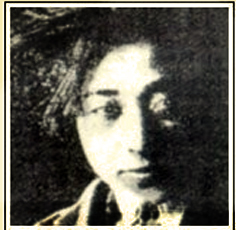Director Kang Ho
24th February 2010
This has been a very busy week with preparations for the new semester that begins next Tuesday which is why I have been negligent about posting here for the past few days. I will catch up though and will work on updating the ‘films awaiting release’ section later this afternoon. In the meantime, here is a little something about a director during the age of silent films, Kang Ho.
 Kang Ho was born on August 6, 1908 in South Gyeongsam Province as the eldest son of a tenant farmer. When he was just 9 years old, he left his local school to get an education at a more prestigious school in Seoul. However, he did not have enough money and was forced to withdraw after not paying his tuition in full.
Kang Ho was born on August 6, 1908 in South Gyeongsam Province as the eldest son of a tenant farmer. When he was just 9 years old, he left his local school to get an education at a more prestigious school in Seoul. However, he did not have enough money and was forced to withdraw after not paying his tuition in full.
Unable to follow the path he wished, Kang Ho came up with a different plan. He had demonstrated a talent for drawing pictures from a very young age so he decided to pursue a career in art. Without he parents’ knowledge or consent, Kang Ho stowed away on a ship to Japan. Once he arrived, he worked at any job a boy his age could–in a bakery, delivering milk, as a messenger and as a newspaper boy. Eventually he had enough money to enter school in Kyoto and later was able to enter the Tokyo Art Institute.
When he returned home to Korea, he started studying moving pictures with the Joseon Movie Arts Association. There he befriended Kim Yoo-yeong and Seo Gwang-je, two other soon-to-be directors (more on them at a later date). While studying art and set design at the Movie Arts Association, Kang Ho made a film entitled Be A Winner, Soonyi about a young girl who enters a footrace in the hopes of winning a magnificent prize that would assist her bedridden father. The movie was released in 1928 and it may be the first film made with a target audience of children but, as no copies of the movie are known to exist, it is impossible to confirm this. But it is known that Kang had expressed an interest in writing stage plays for children.
His next film was released in 1929. A few years earlier, Kang Ho had become associated with KAPF (The Korean Artists Proletariat Federation). That organization operated between 1925 and 1935 and was founded to help spread some of the philosphies that had come out of the Russian Revolution through various forms of art. Kang Ho was originally involved as an artist, but as he was continuing to develop his interest in films, he would soon start working for KAPF’s production company, Namhyang Kinema.
In 1929, Kang Ho produced, directed and starred in The Dark Road. It was a film that tried to depict the plight of the farmers who were suffering terribly from a long economic depression. The film, which was very realistic and dark, split the opinions of film critics down the middle. Critic Yoon Hyo-bong, in the March edition of Movie Comments, tore into the film and the veiled communist philosphy behind it calling it a failure from start to finish whereas Seo Gwang-je writing for the Joseon Ilbo declares it an excellent attempt at filmmaking with no clear faults. Kang Ho was unsure how he felt about attaching his name as the director of this film and so he created the fictional Dok Go-seong and it is that name that appears in the credits.
His next film was called The Underground Village and it clearly reflected the ideals of KAPF. It was about a society of laborers living under a city that was the epitome of capitalism–where wealth, production and pleasures of the flesh are all that is important. Among the laborers in an ironworks factory is Kim Cheol-geun who tries to organize his fellow workers into a union that would prevent the factory owner from carrying through on his threats to fire his employees whenever he is angry. Another character was the wealthy Hyo-seok who gets a lesson on just how many unemployed workers there are living beneath his feet and joins the cause of the poor after hearing an impassioned speach by the eloquent and charismatic Seong-geun, Cheol-geun’s younger brother.
This movie met with a wider aproval but it still had numerous critics, most notably the authorities. The activities of KAPF were getting to be too influencial for the Japanese Colonial Government to ignore and they began cracking down on the organization, erradicating it completely by 1935.
After Korean independence in 1945, Kang Ho moved to the north and became a university professor. He stayed in what would become North Korea and was very active in helping to spread communist ideals. He passed away on July 3, 1984.
